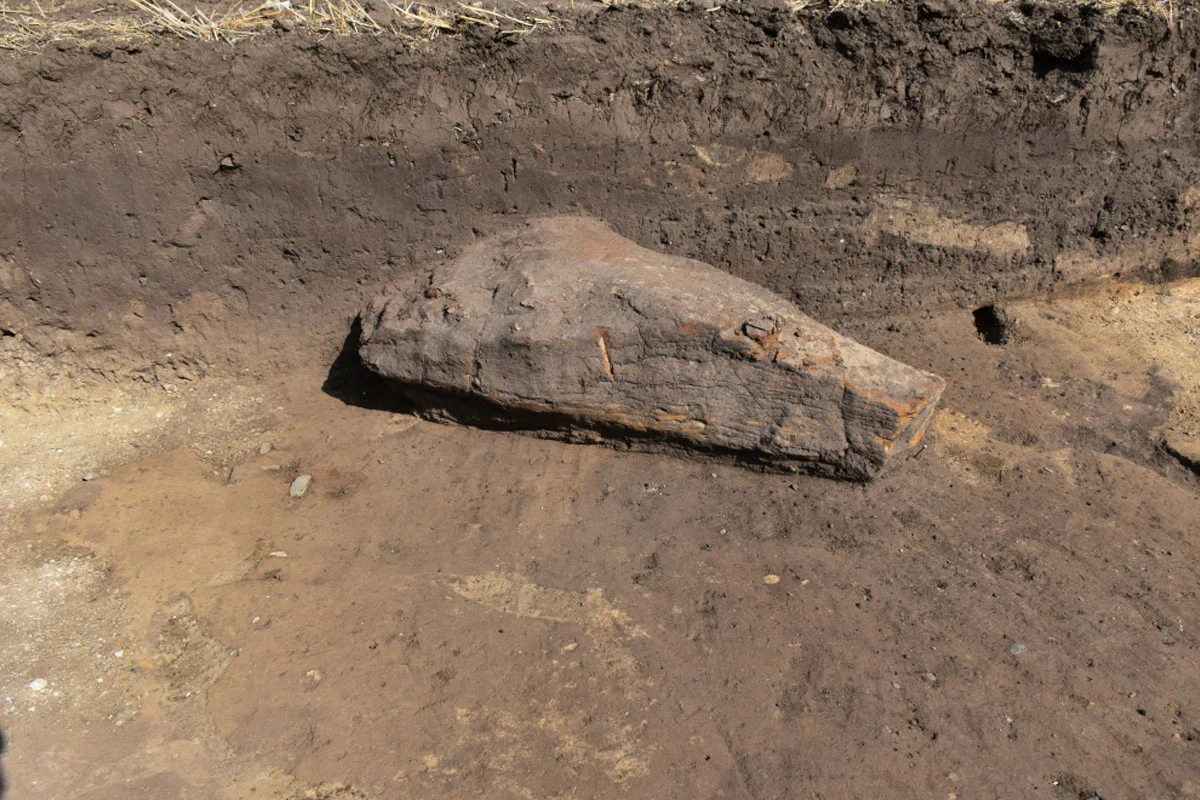Archaeologists from the State Office for Monument Preservation and Archaeology of Saxony-Anhalt have discovered a menhir during excavations near Halberstadt in the German state of Saxony-Anhalt.
Menhirs, meaning “long stones” from Brittonic languages, are large upright stones emplaced in the ground by humans, typically dating from the European middle Bronze Age, with some examples as early as the late Neolithic period.
Menhirs can be found individually as monoliths, or as part of a group of similar stones. Their size can vary considerably, but they often taper toward the top. While examples of menhirs are abundant in Brittany, very few survive in places such as central Germany, which have been lost or intentionally destroyed over several millennia.
Northeast of Halberstadt (Harz district), at Warmholzberg, structural anomalies detected in grain fields were initially interpreted as underground moats associated with Witecke Castle, destroyed in AD 1140.
Aerial photography in the 1990s later revealed a complex ditch system featuring two ditches, each 125 metres long with open narrow ends. Within this layout, a smaller trapezoidal ditch was identified, which archaeologists instead associated with Baalberg culture (a branch of the Funnelbeaker culture) burial sites from the fourth millennium BC.
Archaeologists from the State Office for Monument Preservation and Archaeology of Saxony-Anhalt recently conducted excavations that traced the ditches to a depth of 0.8 to 1.2 metres deep.
Excavations also unearthed a large sandstone slab, which was transported from a stone source at least 5 kilometres aways. The monolithic slab, which has been identified as a menhir, measures 1.74 metres in height and has a pyramidal shape.
According to experts, the menhir provides critical cultural insights into the Warmholzberg complex, which was likely placed as a prominent marker at the summit of a ridge. At some point in prehistory, it was intentionally removed and placed in a ditch, possibly as a ritual deposit.
Who moved the menhir remains an open question. It was likely not its original builders’ direct descendants but members of a later culture with a different worldview. To them, the stone may have been a relic of a past belief system, possibly perceived as enigmatic or even threatening. In central Germany, all known decorated menhirs were relocated in antiquity, often integrated into later burial sites.
Header Image Credit : LDA
Sources : State Office for Monument Preservation and Archaeology of Saxony-Anhalt





